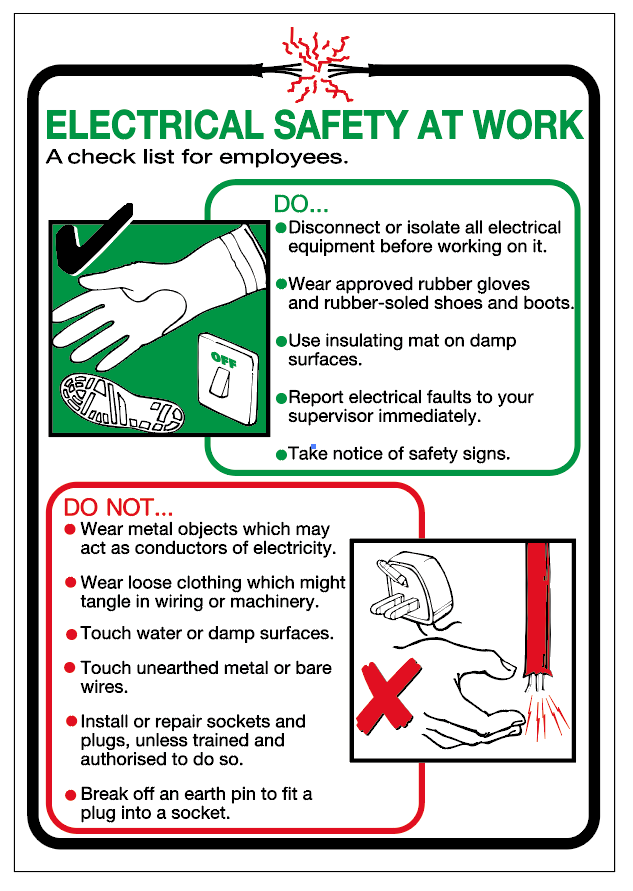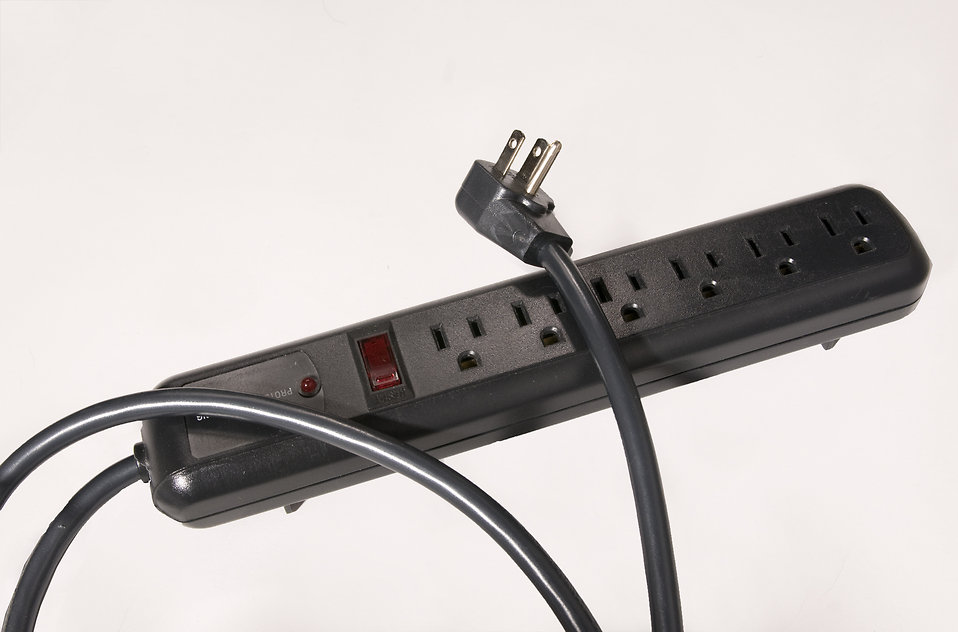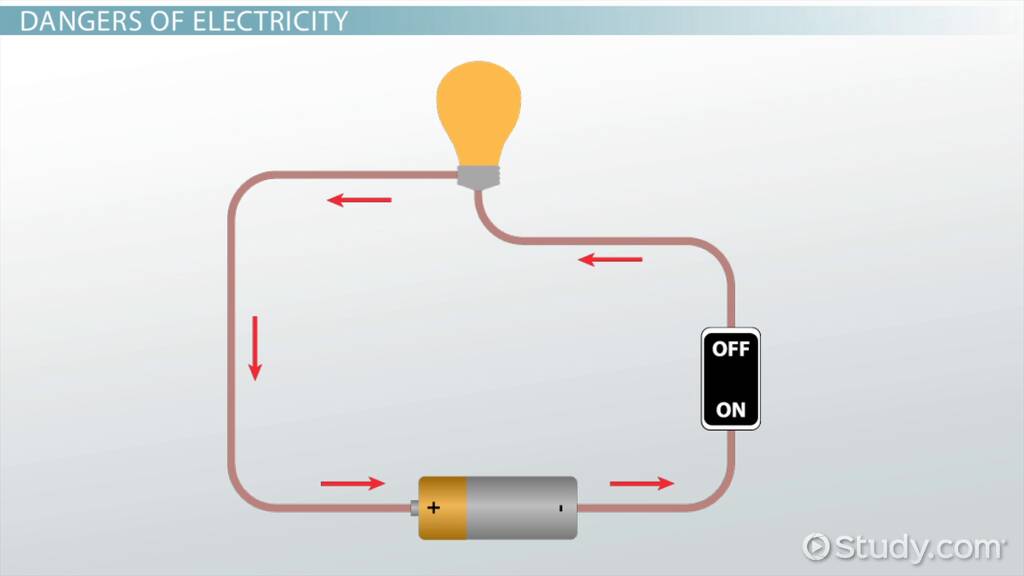A fuse acts as an electricity safety measure by breaking the circuit when excessive current flows through it. This prevents overheating and potential fires.
Electricity plays a crucial role in our daily lives, powering homes and businesses. Safety measures are essential to prevent electrical hazards. A fuse is a simple yet effective device designed to protect electrical circuits. It contains a thin wire that melts when too much current passes through, breaking the circuit.
This stops the flow of electricity, preventing damage to appliances and reducing the risk of fires. Fuses are widely used in various electrical systems, from household wiring to industrial equipment. Understanding how a fuse works can help ensure electrical safety in any environment.

Credit: www.reecesafety.co.uk
Introduction To Fuses
Fuses are small but vital components in electrical systems. They protect circuits from damage. A fuse is a simple device. It prevents electrical overloads and short circuits.
The Basic Concept
A fuse contains a thin metal wire. This wire melts when too much current flows through it. When the wire melts, the circuit breaks. This stops the flow of electricity.
Fuses come in many shapes and sizes. Each type is designed for specific applications. Common types include blade fuses, cartridge fuses, and resettable fuses.
| Type of Fuse | Application |
|---|---|
| Blade Fuse | Automotive use |
| Cartridge Fuse | Household appliances |
| Resettable Fuse | Electronic devices |
Role In Electrical Safety
Fuses are crucial for electrical safety. They act as a fail-safe mechanism. When a fault occurs, the fuse blows. This stops the electrical flow. It prevents fires and damage to devices.
Imagine a surge of electricity. Without a fuse, your devices could overheat. They could even catch fire. A fuse prevents this by breaking the circuit. This makes fuses essential for any electrical system.
- Protects against overcurrent
- Prevents electrical fires
- Saves devices from damage

Credit: datamyte.com
Historical Evolution Of Fuses
Fuses have played a crucial role in ensuring electrical safety over the years. They are simple yet effective devices that protect electrical circuits from damage. Understanding their historical evolution helps us appreciate their significance.
Early Designs
The earliest fuses were basic and rudimentary. They consisted of thin wires made from materials like tin or lead. These wires would melt when the current exceeded a safe level, breaking the circuit.
Early fuses were often unreliable. They sometimes reacted too slowly or not at all. This posed significant risks, including fires and damage to electrical devices.
Modern Improvements
Modern fuses have seen significant advancements. They now use materials like copper or silver, which offer better conductivity and reliability.
Today’s fuses are designed to react quickly to electrical surges. They provide immediate protection, reducing the risk of fire and equipment damage.
Modern fuses also come in various types, including:
- Cartridge fuses: Encased in a tube for added safety.
- Blade fuses: Common in automotive applications.
- Resettable fuses: Can be reset after tripping.
These improvements make modern fuses indispensable in homes and industries. They ensure a higher level of safety and reliability.
| Feature | Early Designs | Modern Improvements |
|---|---|---|
| Materials | Tin, Lead | Copper, Silver |
| Reaction Time | Slow | Fast |
| Reliability | Low | High |
| Types | Limited | Diverse |
With these advancements, fuses continue to be essential in electrical safety. They protect both people and property from the dangers of electrical faults.
Types Of Fuses
Fuses are essential for electrical safety. They prevent damage from electrical surges. Different fuses serve various purposes and applications. Let’s explore the Types of Fuses commonly used.
Glass Tube Fuses
Glass tube fuses are transparent, cylindrical fuses. They contain a thin wire inside. The wire melts when current exceeds the limit. This stops the flow of electricity, protecting the circuit.
| Feature | Description |
|---|---|
| Material | Glass |
| Shape | Cylindrical |
| Usage | Small appliances |
Cartridge Fuses
Cartridge fuses are enclosed in a tube, often made of ceramic. They come in different sizes and ratings. They are used in high-power devices like air conditioners.
- High current capacity
- Reliable and durable
- Easy to replace
Resettable Fuses
Resettable fuses are unique. They automatically restore after tripping. They protect circuits without needing replacement. These fuses are ideal for repeated surges.
- Self-resetting
- Cost-effective
- Used in electronics
How Fuses Work
A fuse is a small device that protects electrical circuits. It prevents fires and damage to appliances. Understanding how fuses work helps ensure home safety.
The Melting Wire Mechanism
Inside a fuse, there is a thin wire made of metal. This wire is designed to melt when it gets too hot. The heat comes from too much electricity flowing through the wire.
When the wire melts, it breaks the electrical circuit. This stops the flow of electricity. The melting wire mechanism is a simple yet effective safety measure.
| Key Component | Description |
|---|---|
| Thin Wire | Melts when overheated |
| Metal | Conducts electricity |
Breaking The Circuit
The main job of a fuse is to break the circuit. Breaking the circuit stops electricity from flowing. This prevents overheating and potential fires.
Once a fuse breaks the circuit, it needs replacing. This ensures the circuit remains protected. Always use the correct fuse rating for your appliances.
- Prevents overheating
- Stops potential fires
- Protects appliances
Understanding how fuses work helps maintain electrical safety. It’s a crucial part of household safety measures.
Selecting The Right Fuse
Selecting the right fuse is crucial for ensuring electrical safety. The correct fuse helps prevent electrical fires and equipment damage. Understanding the different aspects of fuses can help you make the best choice.
Understanding Amperage Ratings
Fuses come with specific amperage ratings. This tells you how much current the fuse can handle. It is important to match the fuse’s amperage rating to your device’s requirements.
- A 5-amp fuse can handle up to 5 amps of current.
- Using a fuse with a higher rating can be dangerous.
A table can help you understand common amperage ratings:
| Device Type | Recommended Amperage Rating |
|---|---|
| Small Appliances | 5-10 Amps |
| Home Electronics | 10-20 Amps |
| Industrial Equipment | 20-30 Amps |
Voltage Ratings
Fuses also have voltage ratings. This indicates the maximum voltage the fuse can safely interrupt. Using the correct voltage rating is critical for safety.
- Check the voltage rating of your device.
- Select a fuse with an equal or higher voltage rating.
For example, a 250V fuse can be used for devices operating up to 250 volts.
Application-specific Fuses
Different applications may require specific types of fuses. Understanding these can help you select the right one for your needs.
- Fast-acting fuses are good for sensitive electronics.
- Slow-blow fuses are better for devices with surge currents.
- Automotive fuses are designed for vehicles.
Selecting the right fuse ensures your devices operate safely and effectively.
Installation And Replacement
Proper installation and replacement of fuses are crucial for electrical safety. Fuses prevent damage to electrical circuits and reduce fire risks. Understanding the correct way to install and replace fuses is essential for maintaining a safe electrical system.
Proper Fuse Installation
Installing a fuse correctly ensures it functions as intended. Follow these steps for proper fuse installation:
- Turn off the main power before working on the fuse box.
- Identify the correct fuse type and rating for your circuit. This information is usually on the appliance or in the user manual.
- Insert the fuse into the correct slot in the fuse box.
- Ensure the fuse is seated properly to make good contact.
- Turn the main power back on and check the circuit.
Safe Replacement Procedures
Replacing a blown fuse safely is key to maintaining electrical safety. Follow these steps for a safe replacement:
- Turn off the main power to ensure safety.
- Use an insulated tool to remove the blown fuse.
- Inspect the fuse to confirm it is blown. Look for a broken wire or dark spots inside the fuse.
- Replace with a new fuse of the same type and rating. Using the wrong type can cause damage or fire.
- Insert the new fuse carefully, making sure it fits snugly.
- Turn the main power back on and test the circuit for proper function.
Following these steps for installation and replacement ensures your electrical system remains safe and functional. Proper handling of fuses helps prevent electrical fires and protects your home.
Common Misconceptions About Fuses
Understanding how fuses work is crucial for electrical safety. Yet, many people have common misconceptions about fuses. This section aims to clear up these misunderstandings.
Fuses Vs. Circuit Breakers
Some think fuses and circuit breakers are the same. They are not. Both protect electrical circuits, but they work differently.
Fuses are simple devices. They contain a thin wire that melts when too much current flows through. This stops the flow of electricity. The fuse then needs to be replaced.
Circuit breakers are more complex. They use an internal switch to break the circuit. Unlike fuses, you can reset them after they trip.
| Feature | Fuses | Circuit Breakers |
|---|---|---|
| Action | Melts | Trips |
| Reusability | No | Yes |
| Complexity | Simple | Complex |
Myths About Reusability
Many think fuses can be reused. This is a myth. Once a fuse blows, it must be replaced. Reusing a fuse is dangerous. It can lead to electrical fires.
Some try to bypass this by using a higher-rated fuse. This is also unsafe. Fuses are rated for a reason. Using a higher-rated fuse can damage your wiring.
- Do not reuse blown fuses
- Always replace with the same rating
- Using higher-rated fuses is unsafe
Understanding these common misconceptions can help you stay safe. Use fuses correctly to protect your home.
Safety Tips And Best Practices
Fuses play a crucial role in electrical safety. They prevent electrical fires and damage. Following safety tips and best practices can enhance protection.
Regular Maintenance Checks
Regular maintenance checks are essential. Inspect fuse boxes monthly. Look for signs of wear and tear. Replace any damaged fuses immediately.
- Ensure fuse boxes are clean and dry.
- Check for loose connections.
- Verify the correct fuse rating is used.
Handling Blown Fuses
Handling blown fuses requires care. Always turn off the main power before replacing a fuse. Use a fuse puller for safety.
- Turn off the main power supply.
- Remove the blown fuse with a fuse puller.
- Inspect the fuse for any visible damage.
- Replace with a new fuse of the same rating.
- Turn the power back on.
Upgrading Fuse Boxes
Upgrading fuse boxes enhances safety. Modern fuse boxes offer better protection. They are more reliable and efficient.
| Old Fuse Box | Modern Fuse Box |
|---|---|
| Limited protection features | Enhanced protection features |
| Manual reset required | Automatic reset options |
| Higher risk of electrical fires | Reduced risk of electrical fires |
Consult a professional electrician for upgrades. They ensure installations meet safety standards.
The Future Of Circuit Protection
The future of circuit protection is bright and promising. New technologies are enhancing fuse efficiency and safety. Traditional fuses are evolving into smarter, more reliable devices. This section explores these exciting advancements.
Advancements In Fuse Technology
Fuses are not just simple wires anymore. Advanced materials now make fuses more durable. Nano-fuses can protect sensitive electronics better. These fuses are small but very powerful. They react faster to electrical faults.
Resettable fuses are another innovation. These fuses can reset after tripping. This means less downtime and more safety. Polymer-based fuses are also gaining popularity. They are flexible and can fit in tight spaces.
Smart Fuses And Automation
Smart fuses are the future of circuit protection. They can communicate with other devices. This allows for real-time monitoring of electrical systems. Smart fuses can send alerts if something goes wrong. This makes maintenance easier and safer.
Automation is also playing a big role. Automated fuse systems can detect problems and fix them. They can even predict failures before they happen. This proactive approach ensures continuous safety.
Smart homes benefit greatly from these technologies. Smart fuses can integrate with home automation systems. This adds an extra layer of protection. It also makes homes more energy-efficient.

Credit: www.ehs.washington.edu
Frequently Asked Questions
How Does A Fuse Act As An Electricity Safety Measure Quizlet?
A fuse acts as an electricity safety measure by breaking the circuit if excessive current flows, preventing damage and fire.
How Does The Fuse Work To Ensure Electrical Safety?
A fuse protects electrical circuits by breaking the connection when current exceeds safe levels. It prevents overheating and potential fires. This ensures electrical safety by interrupting excessive current flow, safeguarding devices and users.
How The Fuse Wire Will Act As A Safety Device?
A fuse wire melts when the current exceeds a safe level. This breaks the circuit, preventing overheating and potential fires.
How Does A Fuse Work To Protect An Electric Circuit?
A fuse protects an electric circuit by melting when excessive current flows. This breaks the circuit, preventing damage and fire.
Conclusion
A fuse plays a crucial role in electrical safety. It prevents potential hazards by breaking the circuit during overloads. This simple device protects both appliances and people. Understanding how fuses work can help ensure a safer home environment. Always choose the right fuse for your electrical needs to maintain safety.




